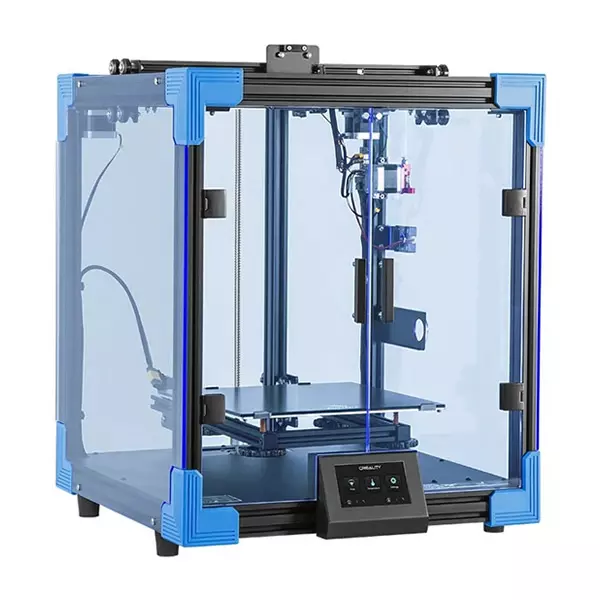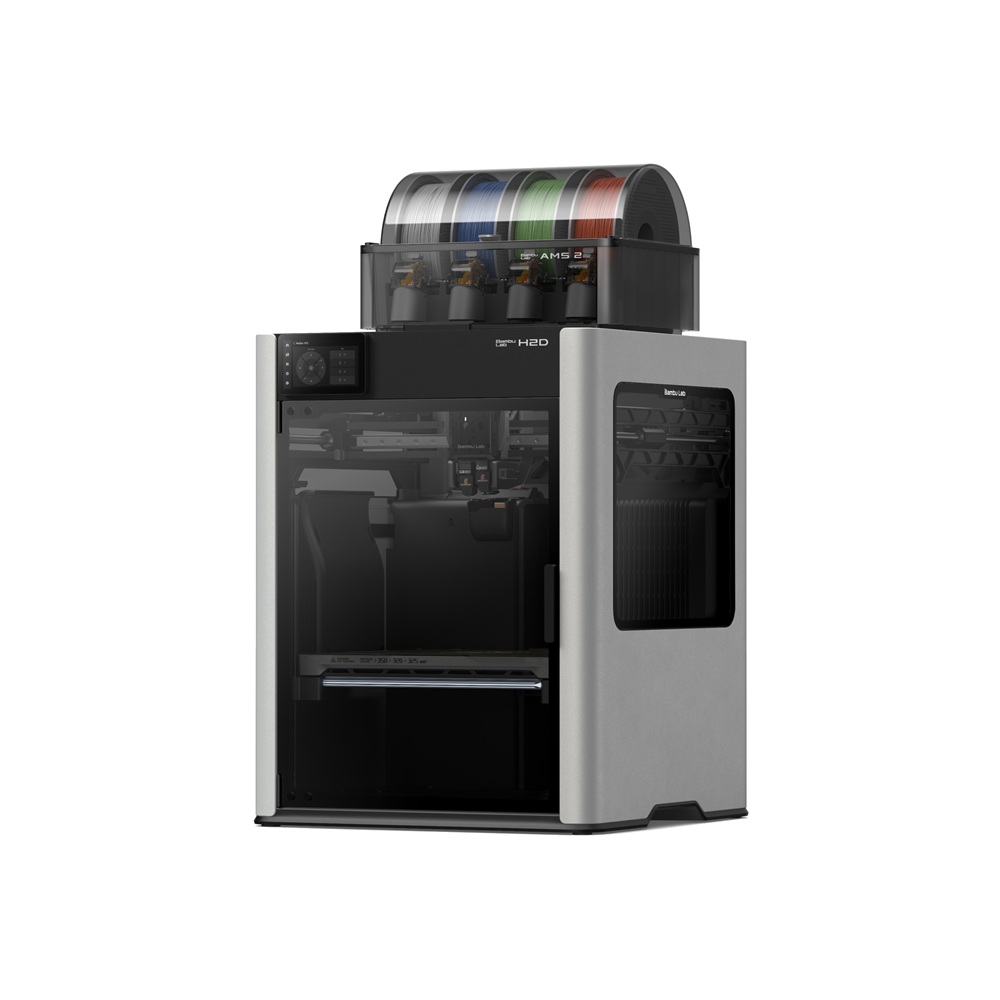Compare Ender 6 vs H2D
Comparison between the best 3D printers
Choose the best 3D printer at the best price. The cheapest 3D printers are here.
Buy a 3D printer here with 3D Fila.
 |
 |
|
| Model | Ender 6[BUY Ender 6] |
H2D |
| Printing Material | Filament | Filament |
| Buy Filament for Creality 3D Ender 6 | Buy Filament forBambu Lab H2D | |
| Estimated price | $499,00 | $1899,00 |
| Manufacturer | Creality 3D | Bambu Lab |
| Release Year | 2020 | 2025 |
| Print Volume [mm] | 250x250x400 | 350x320x325 |
| Printer Size [mm] | 495x495x650 | 492x514x626 |
| Weight [kg] | 22 | 42,3 |
| Power Loss Recovery | YES | YES |
| Enclosed printer | YES | YES |
| Bed Leveling | Manual | Automatic |
| Filament End Sensor | YES | YES |
| Bed type | Heated | Heated |
| Power supply system | Bowden | Direct Drive |
| Standard nozzle | 0,4 | 0,4 |
| Maximum Nozzle Temperature [°C] | 260 | 350 |
| Maximum Bed Temperature [°C] | 100 | 120 |
| Maximum printing speed [mm/s] | 150 | 600 |
| Filament holder | YES | YES |
| Camera for supervision | NO | NO |
| Recommended filaments | PLA, TPU, ABS, PETG | PLA, PETG, ABS, ASA, TPU, PVA, Nylon (PA) |
| Recommended slicers | Cura, Simplify, Slic3r | Bambu Studio |
| Maximum Resolution [mm] | 0,1 | 0,01 |
| Processor | 32 bits | |
| Display | Touchscreen TFT 4,3'' | Touchscreen 5'' |
| Power Supply | 24V / 504W | |
| Connectivity | SD / USB | Wifi, Bambu bus, Cartão SD |
| Operating systems | Windows, Mac, Linux | Windows, Mac, Linux |
| Date of registration in the system | 2021-04-15 | 2025-03-31 |
| Release date | 2020 | 2025 |
| Extra features | The Creality Ender 6 stands out in the world of 3D printers with its CoreXY system, offering fast and high-quality prints. With a robust design, it has acrylic panels to protect against air currents, optimizing the printing of materials that require higher temperatures. It features a generic Creality hotend, effective up to ~240°C. Its differentials include 10mm GATES belts, promoting stability at high speeds, and a 360W power supply for reliable performance. The machine also has an intuitive user interface through a 4.3-inch touchscreen. | Bambu Labs H2D combines high-speed 3D printing with a chamber heated up to 65 °C, dual extrusion with automatic nozzle switching, an AMS for filament drying and exchange, and AI sensors that detect failures. It offers optional laser and digital cutting capabilities, features intelligent calibration through computer vision, vibration control, enhanced fire safety, and real-time camera monitoring. |
| Support for multiple colors and materials (AMS and CFS) | NO | YES |
Notes * |
||
| Cost-benefit | 7 / 10 | 7 / 10 |
| Hardware | 2.5 / 10 | 8 / 10 |
| Tela | . | . |
| Print volume | 4 / 10 | 4 / 10 |
| Performance | 1 / 10 | 5 / 10 |
| [BUY Ender 6] |
Conclusion |
| In comparing the Creality 3D Ender 6 and the Bambu Lab H2D 3D printers, several factors come into play that cater to different user needs and budgets. The Creality Ender 6, released in 2020, offers an entry point into the world of 3D printing with a cost-effective option that provides satisfying performance for general users. It features a compact print volume, manual bed leveling, and a maximum printing speed of 150 mm/s. Although it possesses a solid build with a robust design, its capabilities are more limited compared to the H2D. On the other hand, the Bambu Lab H2D, a more recent model released in 2025, has a significantly higher price point but boasts advanced specifications and features aimed at professional or industrial users. With an expansive print volume, automatic bed leveling, and remarkably high printing speeds of up to 600 mm/s, the H2D is engineered for efficiency and versatility. It supports advanced materials and incorporates intelligent technology for error detection and resolution, along with features like dual extrusion capabilities and real-time monitoring. While both printers share common features such as an enclosed design and the ability to use various filament types, the choice between them ultimately hinges on the intended use and budget. The Ender 6 stands out for hobbyists or individuals seeking reliability at a lower cost, while the H2D appeals to those willing to invest in cutting-edge technology and versatility for more demanding applications. Therefore, potential buyers should weigh their specific requirements against their budgetary constraints when making a selection. |

